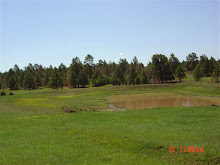
Your water is safe...really, we promise! The sad thing is, these are number provided by the oil and gas industry itself.
Post analysis of state accident reports
By Burt Hubbard
The Denver Post
Posted: 06/28/2010 01:00:00 AM MDTUpdated: 06/28/2010 02:53:25 PM MDT
Oil and gas companies have reported almost 1,000 spills to Colorado regulators over the past 2 1/2 years, totaling 5.2 million gallons of drilling liquids and oil.
They ranged from small oil leaks from half-closed valves to thousands of barrels of tainted water that escaped from pits.
It's far from the volume of oil now shooting into the Gulf of Mexico, but a Denver Post analysis of state spill reports shows that even far from offshore, drilling for oil can regularly create unintended messes:
• Produced water extracted along with natural gas and frac water used in the drilling process were the most common substances spilled. They accounted for nearly half of the spills, 461, and about 85 percent of the amount spilled, 106,000 barrels. Oil spills totaled 319 but accounted for 6,500 barrels of material.
• One hundred eighty-two spills got into groundwater and 82 into surface water. Another 10 reached groundwater and surface water. Most of the groundwater impacts were in Weld County, many of them from historic spills discovered when replacing or moving well equipment.
• Weld County and its 15,000 oil wells had the most overall spills, with 365 — more than one in every three spills in the state. However, Garfield County had the most material spilled, 66,386 barrels, mostly drilling liquids and water used in natural-gas exploration.
• The spills have led to only two fines so far, both for 2008 spills by the same company that fouled springs on the Western Slope. The fines totaled nearly $650,000.
Environmental groups said they are worried about the cumulative effect of so many spills.
"To believe we can have a lot of little spills and a lot of big spills and that we're not going to see a really, really big impact is to ignore the reality of the risks of this industry," said Nada Culver, senior counsel for the Wilderness Society in Denver.
David Neslin, director of the Colorado Oil and Gas Conservation Commission, said many of the spills are small with no real environmental impact, while the state requires remediation for spills that affect the ground and water sources.
The state requires companies to routinely report spills of 5 barrels or more. If a spill occurs near a populated area, companies must report even smaller ones.
"Our reporting requirements are very low," Neslin said. "Many of these reports are for relatively small spills or relatively benign discharges.
"It's not comparable to what's going on in the gulf."
And energy companies said they move quickly to deal with spills.
"Any drop is too much," said Curtis Thomas, director of government and public affairs for BP in the Rocky Mountains. "We immediately begin any kind of process for mitigation and remediation."
A major industry
As in the Gulf of Mexico, energy exploration is a major industry in Colorado, with oil production in Weld County and natural-gas exploration on the Western Slope.
In 2009, the state estimated that mineral exploration generated more than $700 million in revenue for local and state government.
The Post review of state documents found that 981 spill reports had been filed with the Oil and Gas Conservation Commission between Jan. 1, 2008, and June 15 of this year.
The spills totaled at least 123,193 barrels of material, or about 5.2 million gallons . However, 271 of the reports did not initially list the amount spilled. Many of those involved old spills just being discovered. For comparison, the 5.2 million gallons of fluids and oil spilled over 2 1/2 years is the equivalent of the amount of oil that spewed from the BP well in the gulf in about two days .
Kerr McGee, bought by Anadarko several years ago, submitted the most reports, 147, mainly for Weld County operations.
Anadarko spokeswoman Kimberly Mazza said the company moves quickly to notify authorities and start cleanup. Later, it reviews procedures to see what went wrong.
"We place the highest possible priority on being a safe and environmentally conscientious operator," Mazza said.
Companies are not required to publicly disclose the mix of chemicals used in frac fluids.
Colorado's new regulations that went into effect last year require that companies disclose the content of frac water involved in spills if the state asks, Neslin said.
Environmentalists said if the material is benign, its contents should be disclosed.
"It's about the public's right to know and what's going into the streams and aquifers around the state," said Steve Torbit, regional executive director of the National Wildlife Federation.
The Post analysis showed that two fines have resulted so far from the spills over the past 2 1/2 years. Both were against Oxy USA in 2008 for contamination of two springs near Parachute caused by leaks from pits containing drilling wastewater and hydrocarbons from oil and gas.
State investigators found elevated levels of benzene in the springs.
Minimizing the impact
Neslin said other investigations of spills from that period are ongoing.
"In fairness, there are probably another five to 10 enforcement proceedings that are underway," he said.
Neslin said the state instead has concentrated its efforts on new rules designed to minimize the impact of spills. For example, the rules keep drilling operations farther from water sources and people.
"I think we would all agree it's more expensive to clean up a problem after it occurs than to avoid the problem in the first instance," Neslin said.
Burt Hubbard: 303-954-5107 or at bhubbard@denverpost.com






